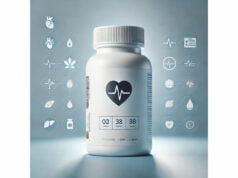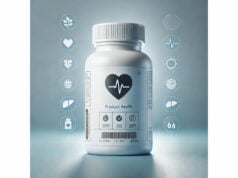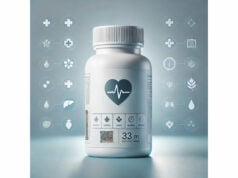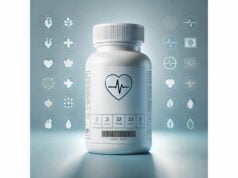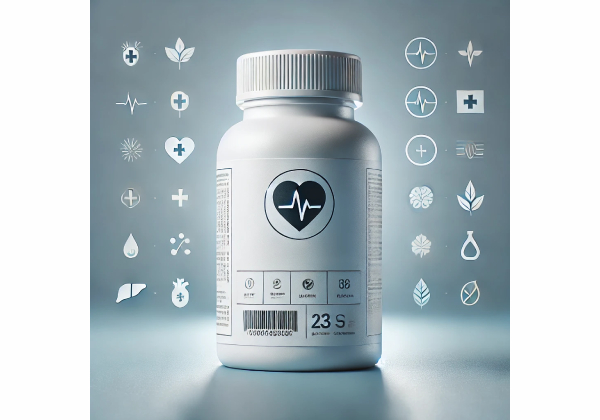
Kratom (Mitragyna speciosa) is a tropical tree native to Southeast Asia whose leaves have long been chewed or brewed as tea for stamina, mood, and relief from aches. In the last decade, powders, capsules, and extracts made from kratom have become widely available online and in shops in many countries. Users describe a spectrum of effects: in small amounts, a coffee-like lift and sociability; in larger amounts, relaxation and pain relief. Those experiences stem from alkaloids—especially mitragynine and 7-hydroxymitragynine—that interact with opioid and other receptors. That same pharmacology also brings real risks: tolerance, dependence, withdrawal, and, in rare cases, serious adverse events. Quality varies widely, and contamination or adulteration has been documented. This guide takes a balanced, people-first look at what kratom is, how it acts, where benefits and limits likely lie, practical dosing patterns users report, side effects to watch for, and the safety steps that matter most if you choose to use it.
Key Insights
- Lower servings (1–3 g leaf) tend to feel more alert; higher (3–8 g) more sedating and analgesic; extracts intensify effects.
- Active alkaloids (notably mitragynine and 7-hydroxymitragynine) act at mu-opioid receptors, so tolerance, dependence, and withdrawal are possible.
- A common beginner range is 1–2 g powdered leaf or 250–500 mg of concentrate labeled 10:1; increase slowly with caution.
- Avoid use if pregnant, breastfeeding, or if you have uncontrolled hypertension, liver disease, or a history of substance use disorder without medical guidance.
Table of Contents
- What kratom is and how it acts
- Does kratom offer real benefits
- How people use: forms, doses, and timing
- Variables that shape your experience
- Side effects, withdrawal, and who should avoid
- Evidence snapshot, safety, and FAQs
What kratom is and how it acts
Plant and preparation. Kratom is a member of the coffee family (Rubiaceae). Traditional use in Thailand and neighboring countries involves chewing fresh leaves or drinking a tea made from dried leaf. Modern products include loose powder (milled dried leaf), capsules, teas, resins, and concentrates marketed as “extracts.” Color names—“white,” “green,” “red”—usually reflect drying/fermentation practices rather than different species.
Key alkaloids and receptors. Dozens of indole alkaloids occur in kratom. Two dominate pharmacology:
- Mitragynine (MG): the most abundant alkaloid in natural leaf. In lab models, MG shows low-to-moderate affinity at the mu-opioid receptor (MOR) with partial agonist properties and atypical, G-protein-biased signaling. MG and related compounds also interact with adrenergic and serotonergic targets, which may contribute to alertness at lower servings and mood changes in general.
- 7-Hydroxymitragynine (7-OH): typically <2% of total alkaloids in raw leaf but substantially more potent at MOR than MG. Some modern products concentrate 7-OH above natural levels, increasing opioid-like effects and risk.
Why effects flip with dose. At lower servings (about 1–3 g leaf equivalent for many adults), stimulation of adrenergic pathways plus modest MOR activity may feel energizing and prosocial. At moderate to higher servings (3–8 g), MOR effects become more prominent, often described as calming or analgesic. Very high amounts can cause nausea, dizziness, or sedation.
Onset and duration. Powdered leaf typically starts within 15–45 minutes, peaks by 1–2 hours, and tapers over 3–6 hours, depending on stomach contents and individual metabolism. Extracts can hit faster and last longer per milligram alkaloid.
Dependence potential. Because MOR is involved, repeated daily use can produce tolerance (needing more for the same effect) and dependence (withdrawal on stopping). While many people perceive kratom as “milder” than classical opioids, the direction of risk is the same. Withdrawal is usually less intense than with high-dose opioids but can be prolonged and uncomfortable.
Legal and regulatory landscape. Laws vary by jurisdiction and change over time. Some places allow kratom sales with age limits; others restrict or prohibit it. Regardless of local status, regulators generally do not approve kratom products as medicines, and quality oversight is inconsistent—making brand choice and testing crucial.
Does kratom offer real benefits
User-reported reasons for use. Common motives include easing everyday aches, improving mood or social comfort, increasing focus for manual work, and self-managing symptoms related to opioid tapering. Survey data often show users value functional pain relief without severe sedation and the ability to avoid alcohol or stronger drugs on challenging days.
What the science suggests so far. Human evidence remains limited and mixed:
- Pain and mood: Small interventional studies and larger observational cohorts suggest analgesic and mood-elevating effects in some users. However, methodologies vary, placebo control is rare, and expectancy effects are plausible.
- Opioid self-management: Some observational work reports kratom helping individuals reduce or abstain from stronger opioids. At the same time, other analyses describe kratom dependence and withdrawal. These dual realities point to harm-reduction potential for some and new harms for others—context and supervision matter.
- Stimulant-like effects: Many people experience increased alertness and work capacity at low servings; physiologically, this likely reflects adrenergic tone plus mild dopaminergic modulation. These effects are also where jitters, restlessness, or racing pulse can show up in sensitive users.
Safety signals regulators emphasize. Authorities highlight reports of liver injury, seizures, blood-pressure changes, and, in rare cases, deaths—often with polydrug exposure (e.g., opioids, benzodiazepines, alcohol) or adulterants. Another distinct risk is contamination (for example, Salmonella outbreaks traced to kratom products). These events are uncommon compared with total use but serious enough to take precautions.
What to take from the evidence today. Kratom’s benefits appear possible for some users—especially short-term, targeted relief for aches or mood—yet the uncertainties and risks are real. If you’re dealing with chronic pain, anxiety, or opioid use disorder, evidence-based care (e.g., physical therapy, CBT-I for sleep, NSAIDs or duloxetine for some pain conditions, buprenorphine for OUD) has stronger backing and should anchor your plan. If you choose to try kratom, treat it like a potentially dependence-forming drug and put safety steps in place.
How people use: forms, doses, and timing
This section explains how people commonly dose kratom for different aims. It is not a recommendation to use kratom. If you proceed, do so cautiously, prioritize lower servings, avoid mixing with other depressants, and consider medical guidance.
Forms.
- Powdered leaf: The most common form; mixed with water/juice (“toss and wash”) or brewed as tea.
- Capsules: Simplify dosing but add filler weight; check actual leaf grams per serving.
- Extracts (tinctures, resins, “shots,” enhanced powders): Concentrated alkaloids; often labeled with ratios (e.g., 10:1) or purported mitragynine content (mg). Effects are stronger per gram and more variable—higher risk if mislabeled or spiked.
Typical serving ranges for adults (leaf equivalent).
- Starter/assessment: 1–2 g on an empty or light stomach.
- Mild functional lift: 1–3 g (alert, social).
- Analgesic/sedating zone: 3–6 g.
- High/sedating: 6–8 g (more nausea/sedation risk; many do not tolerate this well).
- Above 8 g increases adverse effects and dependence risk and is not advisable.
Extract notes.
- A 10:1 extract capsule labeled “250 mg” may approximate ~2.5 g of leaf effects, but potency varies. Products claiming 7-OH content deserve extra caution; even small milligram amounts can be intense. Start far lower than with leaf and avoid stacking doses quickly.
Timing and routes.
- Empty stomach speeds onset but may cause nausea. A small snack can ease GI upset with slightly slower onset.
- Effects typically build for 60–90 minutes, especially with capsules. Redose only after you’ve waited long enough to judge the peak.
- Avoid daily multiple redoses; this is how tolerance and dependence escalate.
Beginners’ three-week evaluation plan (harm-reduction framing).
- Week 1: If you choose to proceed, limit to 1–2 g on up to 3 non-consecutive days. Track mood, pain, HR, BP, sleep, GI.
- Week 2: If tolerating, trial 2–3 g no more than every other day. Avoid mixing with alcohol, benzodiazepines, opioids, or sleep meds.
- Week 3: Decide whether perceived benefits justify risks. If yes, set strict caps (e.g., ≤3 days/week, ≤4 g/serving, no consecutive days). If not, stop—do not escalate dose to “chase” effects.
Basic harm-reduction checklist.
- Choose products from vendors that post lot numbers and lab tests (identity, microbes, heavy metals, alkaloids).
- Use single-substance products; avoid flashy blends and “enhanced” shots.
- Do not combine with alcohol, benzodiazepines, opioids, gabapentinoids, or other sedatives.
- Keep naloxone accessible if anyone in the home uses opioids.
- Store out of reach of children and pets.
Variables that shape your experience
1) Product chemistry. Natural leaf from different harvests can vary in total alkaloids by several fold. Two powders that both weigh 2 g may feel very different. Extracts intensify this variability. Products with elevated 7-OH (above natural proportions) will feel more opioid-like and raise risk.
2) Your physiology. Body mass, liver function, genetics affecting CYP enzymes, and gut motility change onset and duration. People with slower gastric emptying may feel delayed, stacked peaks—leading to accidental over-serving if they redose too soon.
3) Food, caffeine, and hydration. Food blunts peak but eases nausea. Caffeine can amplify jitters at low servings and feel unpleasant when combined with higher servings. Dehydration worsens headaches and GI cramps.
4) Tolerance and pattern of use. Using daily or with frequent booster doses drives tolerance quickly. Many long-time users report that sticking to ≤3 days/week and ≤1–2 servings/day helps preserve effect and reduce withdrawal risk.
5) Co-substances. Mixing kratom with alcohol, benzodiazepines, opioids, or sedating antihistamines compounds respiratory and cognitive risks. Combining with stimulants (e.g., high caffeine, yohimbine) can spike heart rate and blood pressure and heighten anxiety.
6) Health context. If you have liver disease, hypertension, arrhythmias, sleep apnea, depression, bipolar disorder, or a history of substance use disorder, your risk profile is different. For some, kratom may complicate mental-health symptoms or recovery plans. Partner with a clinician if you plan to experiment.
7) Setting and intent. Whether you’re using for a physically demanding shift, post-workout soreness, social anxiety, or sleep changes dose choice—and your susceptibility to downsides like insomnia, low motivation the next day, or rebound anxiety.
8) Supply chain risks. Past outbreaks of microbial contamination (e.g., Salmonella) and occasional adulteration with synthetic drugs have been documented. Visible lab reports that include microbial testing and heavy metals (lead, nickel, arsenic) are worth insisting on.
9) Legal status. Local laws shift. Even where sales are allowed, employers and athletic bodies may treat kratom as a banned substance. Know the rules that apply to your situation.
Side effects, withdrawal, and who should avoid
Common short-term effects (often dose-dependent).
- GI: nausea, constipation, stomach cramps, reduced appetite.
- Neuro/CNS: dizziness, drowsiness, headache, restlessness, “brain fog.”
- Cardio: palpitations, increased or decreased blood pressure.
- Other: dry mouth, sweating, flushing, itching.
Less common but serious.
- Liver injury: dark urine, jaundice, right-upper-quadrant pain; stop immediately and seek care.
- Seizures: reported in some cases, particularly with polydrug use or high-potency extracts.
- Respiratory/CNS depression: risk rises with co-ingested sedatives (opioids, alcohol, benzos).
- Severe infections or tox exposures: due to contamination (e.g., Salmonella) or adulterants; lab-tested sources help reduce risk but cannot guarantee safety.
Dependence and withdrawal. Daily, repeated use can lead to tolerance and dependence. Withdrawal features can include anxiety, irritability, insomnia, muscle aches, sweating, runny nose, GI upset, and cravings—often milder than full opioid withdrawal but longer for some (days to a few weeks).
Practical taper ideas (informational, not medical advice).
- Stabilize at a consistent daily amount first.
- Reduce 10–20% every 3–7 days; hold or slow if symptoms are rough.
- Shift from extracts to leaf before tapering if possible.
- Supportive measures: sleep hygiene, hydration/electrolytes, gentle exercise.
- If you struggle, consult a clinician—buprenorphine-based therapy helps some kratom-dependent individuals.
Medication interactions and cautions.
- Sedatives/opioids/alcohol: additive depression—do not mix.
- Antidepressants and antipsychotics: theoretical serotonergic and metabolic interactions—monitor with your prescriber.
- Blood-pressure, heart-rhythm, or seizure medicines: possible antagonism or potentiation—medical oversight advised.
- Liver-metabolized drugs: kratom may affect metabolic enzymes; check with your clinician or pharmacist.
Who should avoid kratom.
- Pregnant or breastfeeding individuals.
- People with unstable cardiovascular disease, uncontrolled hypertension, significant liver disease, severe mental-health instability, or sleep apnea.
- Those with a history of addiction unless working within a supervised, harm-reduction framework.
- Children and adolescents.
Emergency signs. Call emergency services for trouble breathing, blue lips, unresponsiveness, seizure, severe chest pain, confusion, or signs of jaundice. If opioid involvement is suspected, administer naloxone if available and safe to do so.
Evidence snapshot, safety, and FAQs
Mechanisms in brief. Laboratory work shows mitragynine and 7-OH interact with mu-opioid receptors with partial agonism and atypical signaling profiles, while also influencing adrenergic and serotonergic pathways. This blend likely explains the stimulating-to-sedating dose curve and analgesic reports.
Regulatory posture. Health agencies emphasize that kratom is not an approved medicine and warn about serious adverse events, especially with concentrated or adulterated products and polydrug use. Some regulators have taken action against 7-OH-enriched products as a distinct opioid concern.
Contamination risk. Past multistate outbreaks linked Salmonella infections to kratom products, a reminder to demand microbial testing and to avoid products lacking basic quality documentation.
Heavy metals and adulteration. Testing campaigns have found lead, nickel, and arsenic in some samples, and occasional adulteration with synthetic drugs. Third-party testing and transparent supply chains are non-negotiable if you choose to use kratom.
FAQs
What’s a cautious way to start (adults)? If you proceed: 1–2 g leaf equivalent, once, on a light stomach; wait 90 minutes before any decision to redose. Avoid extracts until you understand your response. Keep total weekly use to ≤3 days to limit tolerance.
How do “white,” “green,” and “red” strains differ? These names are marketing tied to drying/fermentation methods and vendor sourcing. They can correlate with feel (white → more alert; red → more sedating), but batch chemistry varies widely. Your experience is more about dose and alkaloid profile than label color.
Can kratom help with opioid tapering? Some people report success, while others develop kratom dependence instead. Evidence-based treatments (e.g., buprenorphine) have stronger data. If you use kratom in this context, involve a clinician, set a clear exit plan, and avoid mixing with other sedatives.
Is tea safer than powder? Tea may extract fewer total alkaloids and more tannins, sometimes making a gentler experience but not inherently “safe.” Dosing is less precise. Start low, go slow.
How long does withdrawal last? Highly variable: several days to two weeks for most, sometimes longer at heavy doses or with extracts. Sleep support, hydration, and a gradual taper help.
What lab results should a vendor show? Identity (botanical), alkaloid profile (mitragynine; absence of concentrated 7-OH unless declared), microbes (including Salmonella), heavy metals (Pb, As, Cd, Hg), and a lot number with test dates.
Final take. Kratom can feel helpful for some short-term goals, but it sits on the opioid pharmacology spectrum. If you choose to use it, adopt a medical-grade safety mindset: low doses, infrequent days, no mixing with sedatives, and transparent, tested supply.
References
- FDA and Kratom 2025 (Public Health Focus)
- Kratom 2022 (DrugFacts)
- A systematic review of (pre)clinical studies on the therapeutic potential and safety profile of kratom in humans 2022 (Systematic Review)
- Kratom—Pharmacology, Clinical Implications, and Outlook 2020 (Review)
- 7-Hydroxymitragynin (7-OH) 2025 (Report)
Disclaimer
This article is educational and does not replace professional medical advice, diagnosis, or treatment. Kratom products are not approved medicines and can carry significant risks, including tolerance, dependence, withdrawal, liver injury, and dangerous interactions—especially with sedatives, alcohol, or opioids. Laws differ by location and may change. If you are considering kratom, discuss it with a qualified clinician, particularly if you have health conditions, take prescription drugs, are pregnant or breastfeeding, or have a history of substance use disorder. If this guide helped you, please consider sharing it on Facebook, X (formerly Twitter), or your preferred platform, and follow us for more evidence-based wellness content. Your support helps us continue producing high-quality resources.

